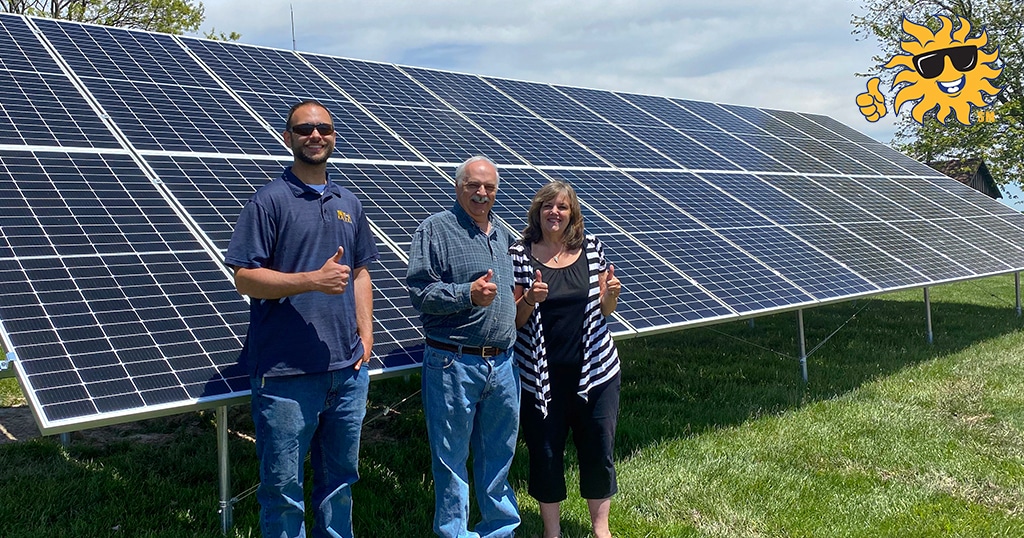
Cost of Waiting to Go Solar – Part 2: Is a Solar a Good Investment Against Inflation? Solar Is an Asset
In a blog post last month, we provided 11 reasons why delaying a solar power system installation can be costly. The cost of waiting can really add up. This month we want to focus on a subset of that 11-point list and address the topic of inflation, including:
- Rising equipment costs due to commodity prices such as steel, aluminum, and copper and solar equipment prices
- Solar power systems as an asset
- Electricity price inflation and prospect for higher rates
- Leveraging low interest loans to purchase an asset like solar
- Low interest rates / ideal time to finance solar
Rising Equipment Costs of Solar Energy
Deferring the decision to install a solar power system soon may be a costly decision for many reasons. Across the solar industry, we are seeing rapid increases in the cost of electrical components such as copper and aluminum, PVC pipe and metal conduit.
Solar equipment prices after many years of decline are now reversing and starting to increase too. Solar panel prices, metal solar racking, and other hardware that make up a solar array are increasing.
Waiting a week, a month, or longer to proceed with a solar power system purchase can add up. The impact of inflation coupled with supply chain issues could add hundreds, if not thousands of dollars to your project, depending on the size of your solar system.
Why Solar Power Systems Are Assets
Solar systems are a great example of a hard asset and something that will likely increase in value with greater inflation and financial market volatility. A solar system consists of tangible property and uses free energy from the sun to create a valuable resource called electricity!
As electricity prices go up, the value of the solar asset can appreciate too! By producing electricity from the sun, you can reduce your reliance on grid power and boost energy and financial independence.
Electricity is a precious resource which is valuable to society. Owning a solar power generating asset on your property is an empowering feeling! Many of our customers would attest to this.
History of Electricity Inflation & A Look Into The Future
Inflation typically occurs as the dollar’s purchasing power is diminished. As currency is devalued the typical response is the price of goods and services goes up. Some may remember the 1970s as a highly inflationary time in US history. During the 1960s, electricity prices were mostly stable and averaged around $0.02 per kilowatt-hour (kWh), or 2 cents / kWh. In 1971, the US dollars connection to a gold standard was severed and inflation really took off.
During the 1970s up to early 1980s, electricity prices on average in the U.S. went from 2 cents up to 7 cents. This was an increase of 250% in just ten years. Imagine if electricity goes up another 250% in the next 10 years.
In Illinois, many residential, farm, and small business consumers pay around 10 cents per kWh. If we experience 1970s style inflation again, power prices could skyrocket to 25 cents. In some parts of the U.S. power prices today are already around 25 cents per kWh on average.
Those areas might see future rates reach 50 to 75 cents per kWh. We don’t know what the future price of electricity will be, but most people agree that prices will continue to go up. Many of the customer we speak to our increasingly expressing this concern.
Solar Financing Has Low Interest Rates
If finding the capital to pay for your solar power system is challenging, financing can help you buy now while prices are still low. A great way to leverage debt is borrowing at today’s low interest rate. Low interest debt can lock in your future cost of solar for your business, farm, or home.
As electricity prices climb, you can enjoy paying much less for electricity with solar power you generate and use yourself. We could see interest rates rise rapidly soon too so locking in financing today is a good move
To summarize, time is money! Solar system installations are going up in price after many years of price declines. In addition, electricity prices may start to rise rapidly in the near future.
Keep in mind that the entire electrical system is heavily tied to commodities. These include steel, copper, aluminum, and the fuels that traditional power plants require. These commodities must be mined and transported to create energy.
Most of our customers are increasingly concerned about the future cost of energy as well as reliability and energy security.
By acting now, you can avoid these risks:
- rising equipment prices,
- rising electricity prices,
- rising interest rates, or
- ALL three acting together!
Tick Tock Energy’s mission is to help you become more energy and financially independent. Contact us today and we’ll help you get started!
P.S. – A great site to check out is https://usdebtclock.org/


